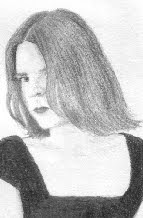 As well as some of history’s most ridiculous hairdos, the eighteenth century produced some of history’s most brilliant women. The bluestockings were viewed as further proof of England’s superiority ... so long, of course, as they comported themselves with the utmost decorum. They wrote plays, poetry, and history; they produced literary criticism and translations from ancient Greek; they included artists and musicians and social reformers. In the 1770s nine of their number were depicted as modern English Muses; twenty years later the bluestocking movement was on a downhill slide into nineteenth-century propriety, another victim of the French Revolution and the upsurge of British conservatism that followed.
As well as some of history’s most ridiculous hairdos, the eighteenth century produced some of history’s most brilliant women. The bluestockings were viewed as further proof of England’s superiority ... so long, of course, as they comported themselves with the utmost decorum. They wrote plays, poetry, and history; they produced literary criticism and translations from ancient Greek; they included artists and musicians and social reformers. In the 1770s nine of their number were depicted as modern English Muses; twenty years later the bluestocking movement was on a downhill slide into nineteenth-century propriety, another victim of the French Revolution and the upsurge of British conservatism that followed.
This is actually a group of essays put out as a companion piece to a museum exhibition in London, but it works perfectly well as a book in its own right (and indeed I heard of it when the local newspaper reviewed it as such). As you might expect with such a provenance the illustrations are lavish - portraits aplenty, images of contemporary prints and publications, and other works of art. It’s a treat for the eyes as well as the brain.
The Enlightenment is one of the reasons I love the eighteenth century. To me there’s something romantic about there being so much to discover that anyone with the time and inclination (and money) could start experimenting and maybe change the course of science, before everything became so highly specialised. There are no scientists here (were there any among the bluestockings?) which I think left me even more impressed by their accomplishments. That Ancient Greek business, for instance, would be entirely beyond me. But since - for women - intellectual endeavours had to be paid for exemplary behaviour (female scholarship being an eccentricity only tolerable if not accompanied by any other trait the least bit objectionable) I’m glad I’m here in the 21st century. No matter how many years of university one has to go through to get anywhere.
For a book with a century to cover - without the discussion of the bluestockings’ nineteenth- and twentieth-century legacies - it’s very slim. Make a further subtraction for the sidebars and illustrations, and there’s not that much space to write about the wide-ranging accomplishments of a hundred years of women. But as an introduction to the lives and work of the most prominent of the Georgian era’s female intellectuals, it’s well worth reading.
Rating: B-

















No comments:
Post a Comment